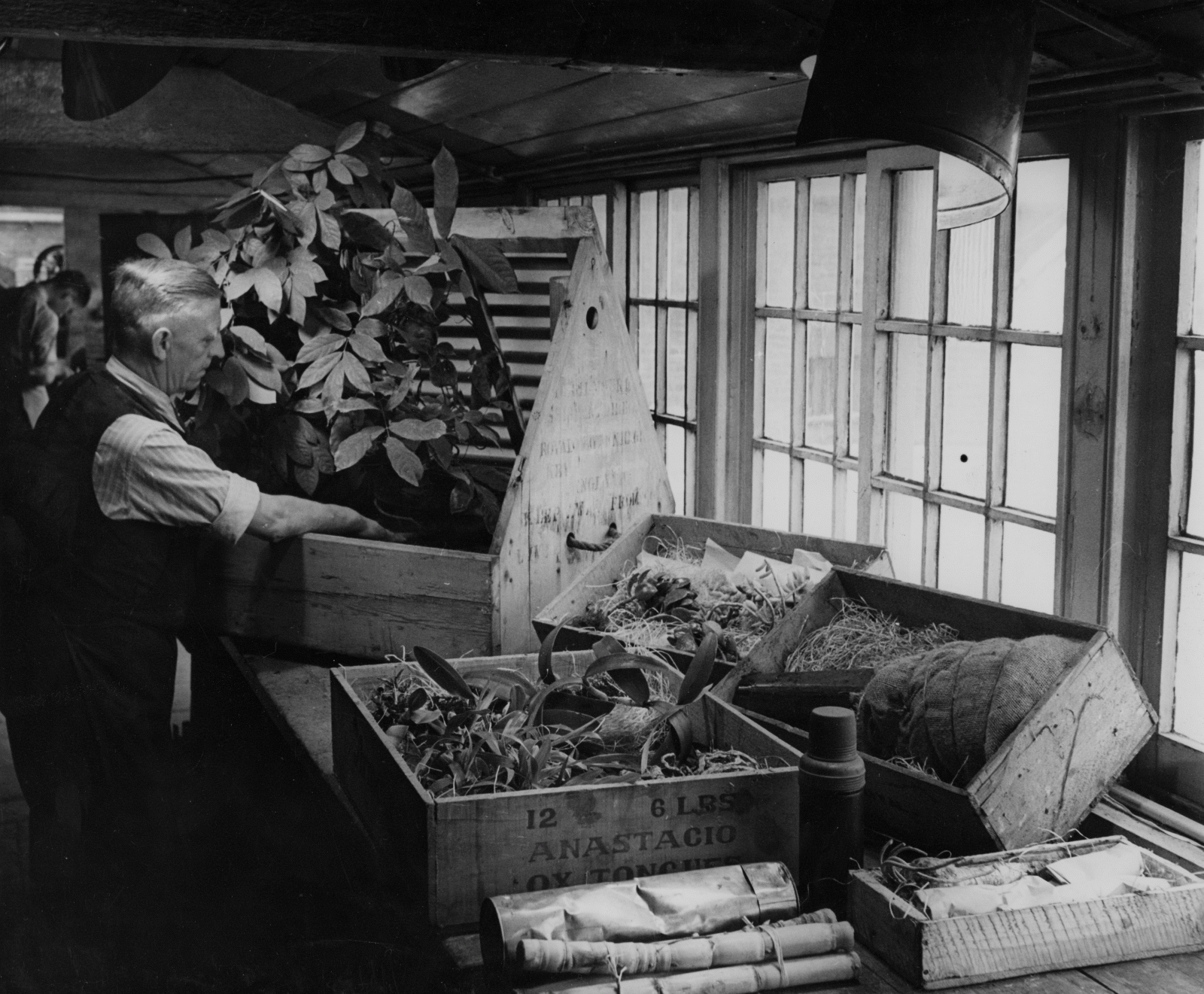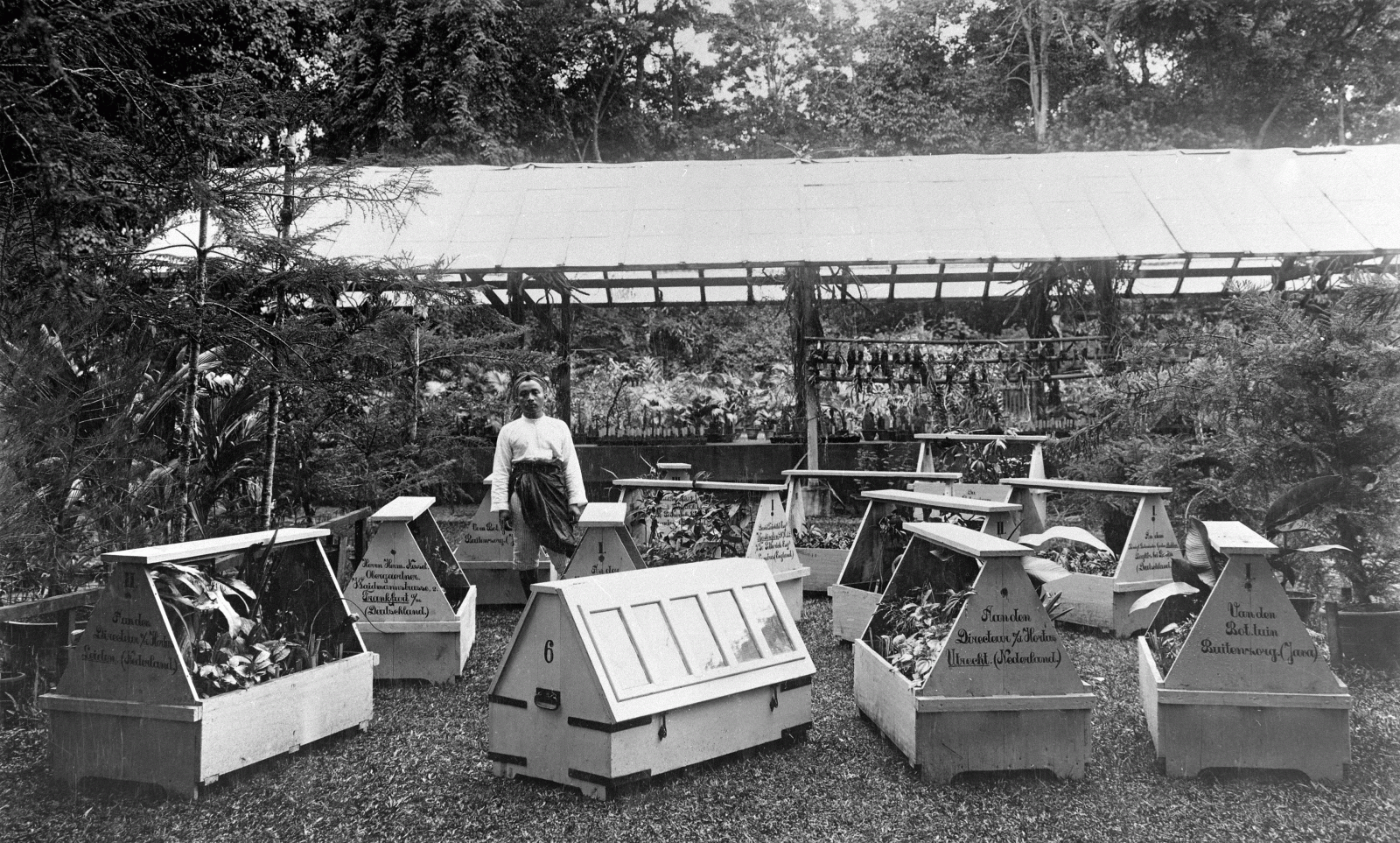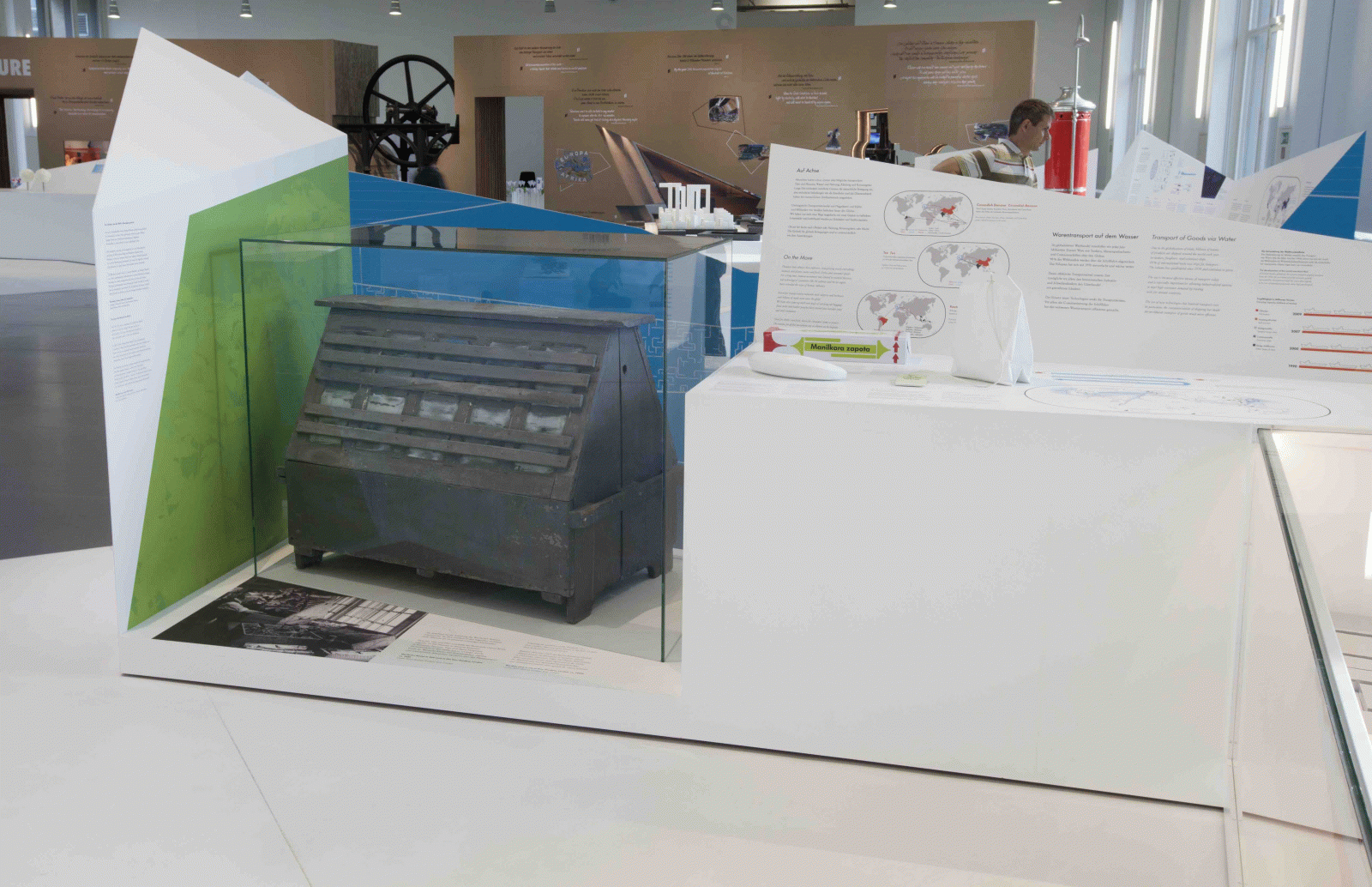Forschung
The Wardian Case: Artefact of the Anthropocene
Luke Keogh

Wardian cases preparing to leave the Royal Botanic Gardens, Kew, c1930. Collection of the Royal Botanic Gardens, Kew.
In 1829, the surgeon and amateur naturalist Nathanial Bagshaw Ward accidentally discovered that plants enclosed in airtight glass cases could survive for long periods without watering. The Wardian case, a simple portable greenhouse used for moving plants, revolutionised the movement of plants around the globe. After the first experiment, the cases were used for over a century. In the cases plants had greater chance of survival when in transit. The case facilitated plant movements around the globe with significant commercial, industrial and environmental consequences. Certainly a product of the gardening crazes of the Victorian era, the Wardian case is also an artefact of the Anthropocene. The case allowed a human facilitated movement of nature that was unprecedented in earth history. This project investigates the Wardian case as an artefact of the Anthropocene and explores the possibilities of the Wardian case exhibition that combines both histories and contemporary art. The project also showcases the Wardian case as a provocation for discussions on the special theme PLANTS at the 4A Laboratory.
This project is part of the Research and Fellowship Program 4A Laboratory: Art Histories, Archaeologies, Anthropologies, Aesthetics, a cooperation between the Kunsthistorisches Institut in Florenz and the Stiftung Preußischer Kulturbesitz.




